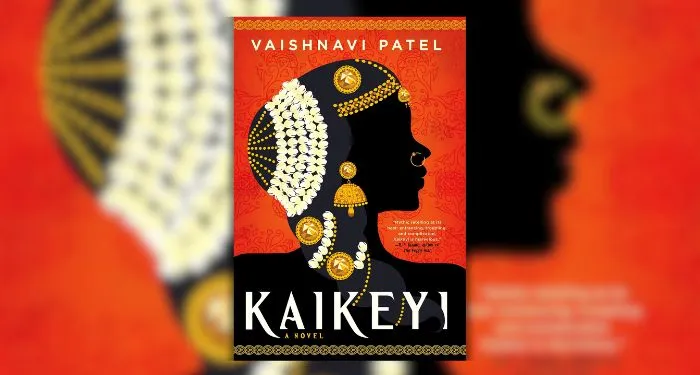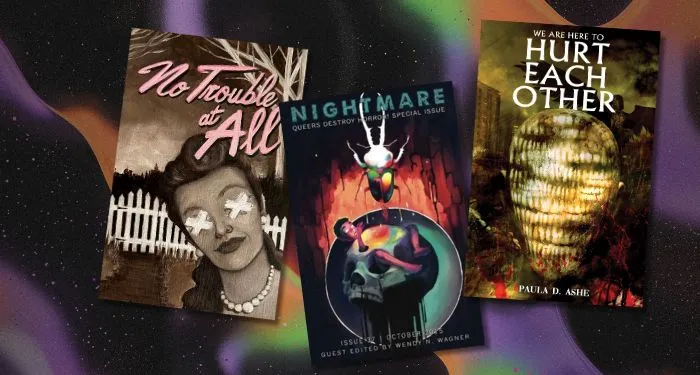Texts that are inertly of their time stay there: those which brush up unstintingly against historical constraints are the ones we keep with us, generation after generation.
—Edward Said
1.
Political poems lead strange lives. More often than not they die on the vine of events they spring from. Contexts fade, and—high historical stakes notwithstanding—the whole enterprise can come to seem pointless, a far cry from Ezra Pound’s definition of literature as news that stays news. Which is why we hear again and again that poetry and politics just don’t mix.
Though, of course, they do. Sometimes violently.
Hayim Nahman Bialik’s 1903 open wound of a Hebrew poem, “On the Slaughter,” is a case in point: “Skies,” it begins, “have mercy….” This dark lyric constituted Bialik’s immediate response to an attack that year on the Jewish community in Kishinev, the backwater capital of Bessarabia (now Moldova’s Chișinău), as Passover and Easter celebrations began to wind down.1 After a week of intermittent rain and the usual seasonal warnings about impending troubles, on the afternoon, evening, and night of April 19, and through the following day, a medley of ax-, pick-, knife-, and club-wielding seminarians, peasants, workers, and students descended on Jewish homes in the city center and then headed for the poorer Jewish neighborhoods on the muddy slopes of the town. Incited by antisemitic articles in a local newspaper and by rumors that Jews had ritually murdered Christian children to supply blood for their Passover matzo, vodka-fueled mobs killed forty-nine Jews, hacking or cudgeling them to death or drowning them in outhouse feces. The horde wounded hundreds, raped women and girls repeatedly, and looted over a thousand homes and shops. (A few months later, in another ultra-nationalist daily he edited in St. Petersburg, the publisher and editor of that Bessarabian paper printed a serialized version of what would come to be known as the Protocols of the Elders of Zion.)
The world press covered the Kishinev massacre widely, as new technologies made possible the immediate distribution of dramatic photographs of the dead. While subsequent attacks on Jewish communities during the Bolshevik revolution were far more devastating—resulting in between 50,000 and 200,000 deaths—it is arguably Kishinev that opened the way into English for the hitherto obscure Russian word meaning riot or wreaking havoc: pogrom, etymologically a “thundering through.”
A quarter of the way into Bialik’s poem about that thunder, the speaker turns his attention from the world above to a stunned earth below:
Executioner, here’s my neck: slaughter!
Take off my head like a dog’s—you’ve got the ax
and the arm, and the world to me is a butcher block.
We, whose numbers are small—
it’s open season on our blood:
crack a skull, let the blood
of infant and elder spurt on your chest,
and let it remain there forever, and ever.
The thirty-year-old Bialik was at that point living some 120 miles southeast of Kishinev, in the balmier and more cosmopolitan Black Sea port city of Odessa. He’d published his first book of poems two years earlier to serious acclaim in highbrow Hebrew circles, and the rising literary star was immediately asked by an Odessan Jewish commission to head an investigative delegation and document the devastation in Kishinev. Bialik and his small group of fact-finders spent some five weeks in the city, taking photographs, assembling documents and statistics, and interviewing victims at length, mostly in Yiddish.
With his extraordinary patience and gift for eliciting detailed, candid narratives, the young poet made a striking impression on the locals. “Even the most reluctant who had blocked out their traumas unburdened themselves before him,” recounted one local observer. They “spoke to him in their everyday language, directly from the heart…. His approach inspired their confidence and helped them to overcome shame. He approached them with genuine warmth, tenderness, acceptance, and good judgment.”2
Having gathered this grotesque testimony and soaked himself in the landscape and aura of the carnage, Bialik retreated to his father-in-law’s summer house, between his childhood home of Zhitomir and the regional capital, Kiev, ostensibly to pull together some two hundred pages of handwritten notes and write his report. What happened next remains mysterious. Instead of composing an official account for the commission, Bialik set to work on what would emerge as “City of Slaughter,” a two-hundred-and-seventy-two-line poem about the butchery, narrated by an impoverished, fallen, and baffled deity who directs a prophet-like poet-witness through the killing fields and a reenvisioning of the assault:
Get up and go to the city of slaughter and come to the yards
and see with your own eyes and run your hands along the fences
and trees and stones, and across the walls’ plaster, and touch
the dried blood and stiffened tissue spilled from skulls of the fallen.…
This voice brought down from on high by the horror excoriates the shattered Jewish community, exposing its suffering, but also its spiritual desiccation, its passivity, even its theological bankruptcy:
And they made my glory great in the world and sanctified my name,
fleeing like mice in flight, concealing themselves like fleas,
they died the death of dogs, there where they were found…
Bialik finished the poem toward the end of the summer. “The day on which this great poem was written,” averred the poet’s friend, the younger Bessarabian writer Yaakov Fichmann, “may be the most important date in the history of modern Hebrew poetry.”3 The report for the commission was never submitted.
For two decades or so prior to the 1903 pogrom, scores of Hebrew and Yiddish poems had been written about attacks on the Jewish communities in the Pale of Settlement. Almost all of those poems were predictable and sentimental. Bialik’s work, says the literary historian Alan Mintz, was the exception. “City of Slaughter,” he writes, “is astonishing, austere, and pathbreaking.” It is also, he noted, “founded on a lie.”4
The “lie” concerns the fact that the testimony collected by Bialik (and published only in 1991) shows clearly that Kishinev’s Jewish community wasn’t nearly as passive as the poet depicts it—that there had been attempts at self-defense. And yet Bialik chose not to include that evidence in his poem, most likely because he wanted the work to goad rather than console, and to serve the greater cause of Jewish awakening—which meant, above all, the reimagining of a vital Jewish life grounded not primarily in physical power but in a deepening of emotional, intellectual, and moral reach.5
Whatever he was thinking or feeling, his poem ends up turning against the victims. The revered fiction writer Mendele Mocher Seforim (S. Y. Abramovitsh), another friend of Bialik’s, likened it to “a second pogrom,” saying:
Nu, Bialik!…When he writes a poem…he always says something that is entirely his. Still, I can’t forgive him for the Kishinev matter.… Just imagine, would you, that wild beasts, the worst scum of the human race, were to attack me and my wife and my children, were to murder and kill and carry out every kind of abomination, were to afflict me with every kind of torture—and along comes someone like some preacher who moralizes at me and throws salt on my wounds…as though the people itself were guilty.
He wasn’t alone in his dismay. Kafka, who read the poem in Bialik’s own loose Yiddish translation and heard a 1911 lecture about it in Prague, was also put off at what he saw as the poet’s exploitation of the victims. And yet Bialik’s jeremiad is more than a simple indictment of Eastern European Jewry’s pathetic detachment and venality. Instead, the tectonic upheaval of the poem brings us into the heart of a people and a poet in crisis.
*
A work of compounded sympathy and staggering cruelty, “City of Slaughter” confronts its readers with graphic, nearly forensic assessments of the violence and turns the bloody occasion into one of the harshest works in the vast library of Jewish self-castigation. At the same time, it makes palpable the way many Jews feel in their bones the long, abattoirish gutters running from Kishinev back to the bludgeoned and lost Jewish communities across the centuries. “Bialik’s Kishinev poem,” writes Mintz, “will not leave us alone.”
Make that Bialik’s Kishinev poems. Both of them. Over the past ten years in particular, “On the Slaughter,” Bialik’s initial response to the pogrom, has become a rhetorical touchstone in pivotal Israeli responses to Palestinian violence. Benjamin Netanyahu has twice cited two of its most famous lines in statements for a global audience. In June of 2014 three Israeli teenagers were kidnapped while hitchhiking home from their West Bank yeshivas. Coming out of a cabinet meeting convened eighteen days later, just after their corpses were found, the prime minister stood before members of the Israeli press, expressed his condolences to the families, and declaimed: “Vengeance like this, for the blood of a child,/Satan has yet to devise.” Revenge would be coming, he promised, and went on in his own words: “Hamas is responsible—and Hamas will pay.” For good measure, the prime minister’s office tweeted Bialik’s lines as well.
And then it was October 7, 2023, a Sabbath and holiday morning, and Hamas’s al-Aqsa Flood was pouring across Israel’s border with Gaza. This was not a pogrom, as the historian Steven Zipperstein points out in a forthcoming essay—the power dynamics differed at root—but the historical half-rhymes, as he notes, disturb nonetheless: some 1,200 people were killed, among them over 800 civilians, who were murdered in a variety of gruesome ways; according to a March 2024 UN Mission report “there are reasonable grounds to believe that conflict-related sexual violence occurred…in multiple locations across the Gaza periphery, including rape and gang-rape”; homes were burnt and property demolished; and roughly 250 people were taken hostage to Gaza. Here too a selective reading of “On the Slaughter” fanned already menacing flames, as once again Netanyahu chimed in, with an English-language post that evening: “As Bialik wrote, ‘Revenge for the blood of a little child has not yet been devised by Satan.’ All of the places which Hamas is deployed, hiding and operating in that wicked city, we will turn them into rubble.”
In both cases Netanyahu’s citations of Bialik’s poem skipped the line that precedes what he quoted to rouse his listeners: “And cursed be he who cries—Revenge!” And in both cases massive Israeli attacks on Gaza followed. The 2014 war claimed the lives of more than 1,400 Palestinian civilians—over five hundred of them children—and sixty-seven Israelis, six of them civilians. As of October 1, 2025, the Palestinian death toll in the current Gaza war exceeds 66,000, the vast majority of them civilians.6 Israeli forces have displaced over two million people, representing at the very least 80 percent of the Strip’s population, with, in many cases, no homes to return to. Famine is rife, communities have been ravaged, “safe zones” are lethal, and universities, hospitals, mosques, churches, libraries, and cultural institutions have been obliterated.
And this too the strange life of a poem like “On the Slaughter” anticipates: that the slaughtered can become the slaughterers. That if one came across Bialik’s poem in its potent 1966 translation into Arabic by the charismatic Rashid Hussein, one of the first stars of modern Palestinian poetry, it would make perfect sense that the poem had found a home in the rhythms and rhymes of Arabic prosody, and that it has lived on in the circulatory and respiratory systems of at least some Palestinian readers, through the 1982 Sabra and Shatila massacre in Beirut and into the Gazan present.7
Bialik can hardly be considered a pacifist. His political moderation and “neutrality” notwithstanding—he never affiliated himself with any political party—his poetry was, as Fichman wrote, “by no means a poetry of appeasement.” Though his “entire being was ready for battle and the agon of struggle,” Fichman concluded, he
was nonetheless in his innermost being a constructive person…. All uprooting, every act of destruction—even in the name of correction or repair (tikkun)—was repulsive to him…. The Jewish revolutionary spirit, and especially the reckless foundation of it—which above all destroyed itself—he could see only as a “Satanic fervor,” and he, a man of passions and fury, the poet of the “poems of wrath,” recoiled from the abyss of ruin.
While the poem and the lines in question are by no means easily reducible to a course of political action, critics and Bialik himself over the years have made it clear that, as the poet Tuvya Rübner has written, “within the cosmic domain in which the poem operates, revenge—which is a human weakness—can hardly exist.”8 The all-too-human desire for it can of course be acknowledged, even as it’s rejected. But in the world that produces Kishinev, the poet seems to be saying, vengeance wouldn’t begin to address the injustice that has been unleashed; the only solution, proposed in a moment of despair, is that the corrosive blood of the dead might bring about the final collapse of a depraved state of affairs, perhaps with a chance to begin again. To seek vengeance would be to make oneself worse than Satan. And that is precisely how Bialik characterized Jewish militancy in Palestine in the late 1920s and 1930s.
In this he was following in the footsteps of his mentor, Ahad Ha’Am (One of the People), the pen name of the essayist, editor, and Odessan eminence Asher Ginsburg, whose vision of a Hebrew renaissance and a cultural or spiritual Zionism—as opposed to Herzl’s “political Zionism”—Bialik identified with in the deepest way. The Zionism Ahad Ha’Am envisioned involved the development of a small but vibrant Jewish community in Palestine that would, initially, entail neither mass immigration nor political sovereignty; instead this national rebirth would be achieved through the revival of Hebrew language, literature, arts, and, first and foremost, ethics, in both the diaspora and the vanguard spiritual center in the Land of Israel. Ahad Ha’Am’s strongest statement on the ethical underpinnings of the Jewish claim to a presence in Palestine, let alone self-determinacy there, came in a 1922 letter: “Our blood was spilled like water in every corner of the world for thousands of years, but we did not spill blood. We always remembered that the great ethical teachings that our ancestors bequeathed us were the teachings of the future…. For without these principles…what are we, and what will be our life [in the Land of Israel]?”
2.
“A broad face, frank, fair-skinned and clear eyed…. There is something rural about him, a man of the earth…though the mouth’s outline is exceptionally refined,” Fichman wrote. It’s “a typical Slavic face etched with perennial Jewish concern. Whenever the joyful surge in the blood asserts itself, so does the sorrow. When he concentrates, his eyes close; but when they open they reflect a bluish gleam suggestive of the green woods and wide meadows he absorbed in his childhood.”
Born in 1873 in one of the forty or so huts comprising the northwestern Ukrainian village of Radi, Bialik spent the first five years of his life on the forest tract managed by his Torah-devoted but distant father of Hasidic stock—Yitzhak Yosef. When his father’s timber business failed, the family moved to the outskirts of the nearest and very Jewish city of Zhitomir, where Yitzhak Yosef opened a store and later a tavern. Bialik’s mother, the moody Dinah Privah, peddled hand-knitted socks and other goods in the local markets. Both had been married previously, and widowed. Two years after the move Yitzhak Yosef died, and Bialik’s put-upon mother brought him to live with his strict paternal grandparents, who saw to his religious education.
When he was seventeen Bialik left Zhitomir for the flagship Lithuanian yeshiva in Volozhin, famous for the quality of its teachers and students and for the intensity of its round-the-clock study. Its students, he’d heard, read well beyond the standard religious curriculum, and independent thinking flourished there. During the eighteen months of his study at Volozhin, he made friends, began writing, but eventually grew weary of yeshiva life. In the first of many restless moves, he left for Odessa, which alongside Warsaw had developed into one of the two hubs of the modern Hebrew literary renaissance and become home to an impressive array of Jewish writers, editors, and cultural arbiters.
He stayed for six months, teaching Hebrew privately, reading Dostoevsky and Gogol in the original (his Russian had improved at Volozhin), and being tutored in German. He also submitted some of his poetry to the distinguished editor of a new Hebrew literary journal, Pardes (The Orchard). When pressure from the Russian authorities forced the Volozhin Yeshiva to close—they considered it a possible breeding ground for social unrest—Bialik had to return to Zhitomir, as he’d kept hidden from his grandparents that he had already dropped out. Shortly after his grandfather died in 1893, the twenty-year-old poet married Manya Averbuch, a local girl he’d been engaged to for less than a year, and went to work with her father in the timber trade in Korostyshev, near Kiev. Most of the week he’d spend alone in the woods, or with his workers, reading into the evenings.
All the while new poems were coming. His submission to Pardes had been accepted and published in 1892 to considerable acclaim, alongside work by the leading literary lights of the day, including Sholem Aleichem, Mendele Mocher Seforim, and Y. L. Gordon. The young Bialik’s contribution—a poem about a bird—appears toward the end of the volume, sandwiched between a Hebrew translation of a poem about a teardrop by Heine and an essay by Simon Dubnow, the historian who would, among other things, go on to head the Kishinev pogrom commission. The thirty-three-year-old editor of the journal, Yehoshua Ravnitzky, eventually became Bialik’s closest friend and partner in an extensive project to gather and publish major Hebrew works of the past and present.
His adventure in the timber business, meanwhile, had failed miserably, and impoverishment loomed once again. An invitation to take up a private Hebrew tutoring position in Sosnowiec, Poland (near Krakow) rescued him from the financial brink and from his woodland isolation. In Sosnowiec his poetry thrived, even as he came to despise the materialism of the local Jewish community and its entrenched apathy. He lived there for three years before accepting a better teaching post that allowed him to return to Odessa.
He and Manya never had children. They lived in Odessa for almost all of the next twenty years, through the various stages of the Russian Revolution. The elegant and relatively young seaside city—founded by Catherine the Great in 1794—infused him with new energies: its light and air, and its intellectual company; its large and forward-looking Jewish community (Jews comprised nearly a third of the population); its linguistic, ethnic, and commercial diversity; and, always, the promise of the sea. The historical exigencies of the day also challenged him, and his poetry matured—its music deepening and growing more complex, its scope widening (as in the Kishinev poems). His greatest poetry took shape during these Odessa years.
Apart from a fifteen-month interlude in the still more open and “melodic” Warsaw (as Fichman put it) to take up yet another editorial position, and a three-month trip to then-Ottoman Palestine in 1909, Odessa remained Bialik’s home until 1921, when it became clear that Hebrew and Jewish culture would have no future in the Bolshevik society that was taking shape in Russia. Hebrew presses had been banned from publishing, Jewish communal activity was prohibited, and personal survival and safety now felt threatened. Only after extreme and risky efforts in Moscow and through various backchannels, including the intervention of Maxim Gorky—an ardent supporter of equal rights for Russian Jews and an admirer of the “genius” of their greatest poet—did the fifty-year-old Bialik obtain permission to emigrate.9 On June 21, 1921, with Ravnitzky and the families of ten other writers, Bialik and Manya gathered at the Odessa port and boarded a ship for Istanbul. From there the others set sail for British Mandatory Palestine, while the Bialiks stayed on in Turkey for several months, planning a trip to Berlin to tend to business of various sorts.
As it happened, Bialik spent a full three years in Berlin and Bad Homberg, where he supervised the publication of his collected works and solidified the European operations of the publishing enterprise he’d undertaken in Odessa with Ravnitzky, which he intended to continue in Palestine. Finally, in March 1924, via Trieste and Alexandria, Manya and Bialik made their way to Tel Aviv, where the poet received a hero’s welcome. There he oversaw the building of a kind of orientalist castle that immediately became known as “Beit Bialik” (Bialik House), wrote almost no poetry (though he continued to issue up powerful essayistic prose), and soon wearied of the constant fuss and attention and rounds of responsibilities. Although he served as a kind of cultural mayor of the new city and father figure to the Jewish Zionist community in Palestine, he also took every opportunity to travel abroad for business and eventually rented out the small palace that bore his name and moved to a modest apartment in a nondescript adjacent suburb.
By then he’d been suffering for several years from various ailments, including cherry-sized kidney stones, and he followed his physicians’ advice to undergo treatment in Vienna. Specialists determined that he needed to have his enlarged prostate removed, and in June of 1934 surgery was performed, successfully. He’d been convalescing at the hospital for nearly two weeks when, on July 4, while reading the paper, he cried out in Yiddish that his heart was exploding. Death came quickly: a blood-clot embolism had blocked his coronary arteries. He was sixty-one. Arrangements were made to have his body shipped back to Tel Aviv, where his funeral took place, attended by some 100,000 people—which is to say, half of the Jewish population of Palestine.
3.
Bialik’s reputation as the voice of his age and the major figure of modern Hebrew poetry rests on a foundation of some thirty poems that sang, cut, felt, sculpted, and blasted their way through the haze of a musty nineteenth-century Hebrew romanticism. He produced a handful of classically buttressed, visionary essays as well, along with a small corpus of short fiction, scores of informal talks on wide-ranging topics, and, increasingly as he got older, that ongoing project of cultural retrieval he called kinus, or ingathering—not of exiles and refugees but of texts in danger of being lost forever to the world of rapidly changing or vanishing Jewishness. Apart from publishing what they considered to be the most important Hebrew writing of the moment, and attempting to construct something like a contemporary Jewish bookshelf, or canon, Bialik and Ravnitzky edited and published work by major Hebrew writers of the past, including Iberian Hebrew poets such as Solomon Ibn Gabirol and Moses Ibn Ezra; the almost excommunicated Italian Hebrew writer and mystic Moses Hayim Luzzatto (whose theories of the conjunction of Kabbalah, the music of poetry, and deliverance through language had a major if camouflaged influence on Bialik); and a monumental and still valuable collection of rabbinic writing called Sefer HaAggadah (The Book of Legends).
Hebrew came late to the party of the modern. Traditional Jewish men of Bialik’s day studied, read, and to a certain extent wrote Hebrew in religious contexts from a very young age; but speaking was generally reserved for the vernacular wherever Jews lived—Arabic in the Islamic world; Ladino in the Ottoman Empire; German, Yiddish, Russian, and other languages in the Austro-Hungarian Empire and the Pale of Settlement. Bialik’s mother tongue, in other words, wasn’t Hebrew—that was the tongue of his fathers. His native language was Yiddish, which he continued to speak to his wife and his friends, even in “the Hebrew city,” Tel Aviv. “Yiddish speaks itself,” he’d say, “Hebrew has to be spoken.” Gershom Scholem, the great Berlin-born scholar of Kabbalah, tells how when he’d visit Bialik on Friday evenings during the poet’s last years in Tel Aviv, he’d hear Bialik say to his wife or the other guests in Yiddish, in part to tease him, “Der yekke (the German Jew) has come, we’ve got to speak the Holy Tongue.” Which is to say, Hebrew.
At the beginning of the Hebrew twentieth century, direct individual—rather than collective—expression still constituted the stuff of a cultural revolution, and Bialik was its poet. He drew on all the registers of Hebrew literary history: the sublime style of the Bible, the grounded specificity of the Mishna, the dense and dexterous kineticism of the Gemara’s disputation and exchange, the narrative and exegetical figuration of rabbinic works and mystical texts, the unrivaled music and emotional range of the great Andalusian Hebrew poetry. And from that miraculous-seeming synthesis he forged a lyric and neo-prophetic idiom that felt at once immediate and resonant, personal and everyone’s, not the vernacular or at all colloquial and yet intimate, lit with the charge of Jewish longing and learning and life. Take, for instance, “News,” composed just a month or so before the Kishinev massacre:
The light clouds grow lighter,
the clear clouds still more clear—
avenues into a new
blue are being revealed.
I lift my eyes higher—
a curtain is being raised,
and with the heavens themselves
I’m speaking face to face.
Mouth to mouth, my heart’s
channel opens to theirs:
and through the white luster
the sky’s abundance pours.
Over my head that pure
azure is spilling into
the air, and through me like
Eden’s balm and dew.
Already I can hear
the rustle of bright wings.
Already my heart feels
the rays along my veins.
Light, be fruitful and multiply,
startle my heart’s walls—
and all at once, within me
new song starts to call.
He began composing in a delayed Romantic mode, but one that was soon tempered by his immersion in Symbolist, Decadent, and—above all—high-resolution Russian realist literature. This he grafted onto a trunk of retooled biblical elementalism, and, when called for, its brimstone, with a rabbinic steadiness of pitch and tone added for ballast. The voice that came forth feels like a peculiar cross between Wordsworth, the Psalmist, the major biblical prophets, Lermontov, and Thomas Hardy as the Poet of Cusps. For all of his insular Jewishness and commitment to a future for Jews in the Land of Israel, Bialik started out and in many ways remained to the end a Russian poet with what one prominent scholar has called “the energy, the moral sincerity and torment, the chiaroscuro moods, the love of the…landscape and the changing seasons” that one would expect from a poet in that tradition.10
This fact goes at least some way toward explaining the steep decline in Bialik’s production as the Eastern European worlds he knew gave way—and as he himself tried to adjust to the “land of the sun,” where, by then, the Sephardic system of Hebrew pronunciation prevailed and effectively rendered obsolete the suppler and gentler Yiddish-inflected Ashkenazic prosody of his poems.“You should know that my soul is rooted in the diaspora,” he’d written late in 1903 to a colleague who’d repeatedly tried to persuade him to accept a position as a teacher in Palestine at a new school being established for the orphans of Kishinev. “Perhaps the Shekhinah [divine presence] abides with me only in sadness and on defiled soil.” Justifications apart, little in the way of song wafted up from him once he settled in Tel Aviv. It is one of the great ironies of Bialik’s career that when at last he found himself in a Hebrew-speaking culture, it turned out to be inimical to the deepest drives of his art.
*
Bialik’s poetics of belatedness notwithstanding, the sheer force of his presence and prescience—his blending of lyric and moral leverage; his sensitivity, fearlessness, fury, and vulnerability; his powerfully integrated intellect and his capacious vision of a Jewishness that might evolve through the deepest translation of its endangered materials—all coalesce in his verse to form a poetry of the first intensity. In his quasi-Kabbalistic and even Wordsworthian 1904 poem “The Pool,” he wrote of a revelation that occurs in the shadow-space of the sacred, where “a silent language of gods exists” within our consciousness of nature and its shifting forms:
This is the language of vision, revealed
in an azure strip of the heavens’ expanse
and within its silvery clouds and nimbuses massed;
in the corn’s trembling gold
and the great cedar soaring—
the white wing of the fluttering dove,
and the broad strokes of the eagle’s wings;
in the simple beauty of a man’s back
and the splendor of the look in his eye;
in the sea’s anger and its breakers’ crash
and laugh; in the night’s bounty and the silence
of falling stars; in the noise of fire
and the ocean-roar of daybreak’s blaze
and dusk. Within this language, the language
of languages, the pool spelled out—for me
as well—its eternal riddle,
tranquil, and hidden there in the shade,
seeing all and also holding
and with it all always altering.
His 1927 essay “On the Sacred and Secular in Language” sheds light on the broader vision that drove him from his late teens on: “There are transmigrations in language: many souls pass through, one after another, each leaving its spirit in the word. All of these spirits cling to the word.”11 Keeping those souls and spirits alive remained Bialik’s abiding aim, whether he was writing poems or essays or stories in Hebrew or Yiddish, teaching children or composing poems for them, editing the finest Hebrew literary journals of his day, publishing volume after volume of Hebrew classical literature through the ages, or inventing words to stoke and extend the language’s reach.
The core of that ongoing life involved a self-correcting or balancing dynamic that Bialik called ha-shniyut b’yisrael, a term that’s usually translated as “Jewish dualism” but which, because of its essentially dialogic and relational nature, might better be thought of as a “doubling” or dialectical coupling: sacred and profane, homeland and diaspora, letter and spirit, shepherd and farmer, Yahweh and Elohim, concretion and abstraction, halakhah (the literature of religious law) and aggadah (anecdotal wisdom in action), and, as the title of his best-known essay has it, “Revealment and Concealment in Language.”
The alternating current between each of these pairings runs, as Bialik felt it, like an incandescent filament through Jewish life, sustaining it through calamity, accomplishment, and the normal mysticism—and tedium—of its dailiness. “Halakhah wears a frown,” begins another of his still-widely cited essays, “aggadah a smile. The one is pedantic, severe, unbending—all justice; the other is accommodating, lenient, pliable—all mercy.” A talk he gave in Berlin in 1922 addresses this question of duality and sustenance directly: “A people whose fate is determined by only one tendency and which puts all its weight on one foundation must depart from the world stage when this power is no longer strong and its rule has evaporated. A people, however, which is in equal measure under the rule of two forces lives forever.”
Bialik’s entire body of work—from his poetry to the ancient and medieval literature he sought to bring into a reimagined present throughout his life and for future generations—took shape under the aegis of that doubleness. It might effectively be considered a kind of translation: translation of materials through which, as the novelist José Saramago once put it, something older “has to be transformed…in order to keep on being what it was.”12
There is the matter of Bialik’s own bilingualism, or diglossia, to be sure. But the translational compound at the heart of his enterprise goes further still. It runs through the Yiddish translations of his poetry—made by some of the finest Yiddish writers of the day, and sometimes by Bialik himself. Of particular interest here are the translations of his work into Russian by Vladimir Jabotinsky, who was well into his own transformation from aspiring multilingual poet, novelist, journalist, and Odessan bohemian to greater notoriety as a militaristic right-wing nationalist thinker and activist—one whose later Revisionist Zionist ideology Bialik came to consider diabolic.
While the poet long and stubbornly retained a certain fondness for Jabotinsky the man, he wrote while convalescing in the Austrian Alps to a new friend in Tel Aviv in 1933 that Jabotinsky was “sunk into the mud by Satan.” Bialik described him in similar demonic terms to others, and when he referred to Revisionist thinking in his correspondence he “resorted time and again,” as one scholar puts it, to language of “abomination, swamp, and filth.”13 Eulogizing a murdered Zionist leader that same year, and suspecting the involvement of the Revisionists in the killing, Bialik addressed himself to the entire yishuv, or Jewish population of Palestine:
I call upon you, together with your leaders, to chase from your midst every Satan, to consume the evil and uproot it. Defiled words that we have not known have been thrown within us—“fist,” “thug”—these should not have any place within us. Our camp must be holy. “Fire and blood” and all other phrases that have nothing behind them but hollow rhetoric, no substance, there should be no trace of these.
Bialik and Jabotinsky would part ways sharply, with the latter declaring repeatedly in lectures throughout Europe that “Bialik is already lost to us and will not return.” And yet, in another ironic twist, it was that contemporaneous translation by Jabotinsky of “City of Slaughter” that helped make Bialik the “national poet” of the Jewish people and brought him to widespread recognition beyond Russian Jewry—the world’s largest at the time—and out to writers such as Gorky, Mayakovsky, and others. Jabotinsky’s selection and translation of Bialik’s poems eventually sold tens of thousands of copies, which is to say, many more than the poet’s work in its original Hebrew.14 Writing about the Russian collection, Gorky speaks of Bialik as a great poet of, at once, wrath, grief, despair, and love for the world—“a rare and perfect embodiment of the spirit of his people…a modern Isaiah.”15
4.
What first drew me into the Bialikian forcefield some four decades ago had nothing to do with slaughter or modern Hebrew per se. It was the vividness of Bialik’s prose about kinus, particularly his descriptions of encountering the long-neglected Arabized Andalusian Hebrew poetry of the eleventh and twelfth centuries—the state of which he likened in 1924 to “a desolate plain of dry bones scattered with the stones and shards of a palace in ruin.” He’d set out the challenge in an earlier essay: “From all the branches of our literature, from every corner in which a part of the ‘holy spirit’ of the nation is hidden…we have to extract the best, scattered, sparks, to join them together.”
Over the years I translated a number of his poems that had attached themselves to me for one reason or another. But it came as a complete surprise in the weeks and months after October 7, 2023, that it was Bialik who rose up out of our violent and in many ways desperate moment and spoke to me: Bialik not as the proto-Zionist oracle of vengeance that politicians have concocted, but Bialik as a poet of poise under soul-crushing pressure—a poet far darker than most readers realize, yet one who keeps his eye on the prize that has construction and complex love at its center, albeit a love riddled with ambivalence and laced with an often acerbic critique of himself and his own community, as well as those of his people’s tormentors and would-be exterminators.
Here too the strange lives and lure of poems and their politics take hold. Writing in 1685 about translating from a miscellany of major Latin writers, John Dryden noted that things sometimes appear in his English renderings that at first glance might seem to be additions to the text or projections of the translator. And yet, he proposes, they are in fact “secretly in the poet,” as though the reagent of translation and time had brought these hidden things out and animated them for the translator and possibly for a new generation of readers.
So it is, for instance, in our encounter with Bialik’s debut, “To the Bird.” As the young-old speaker longs for safety at home and “song” from a far-off land, a shadowy anxiousness asserts itself in ways that likely went unheard in late-nineteenth-century romantic readings of the poem, which wonders “if in the land of the sun as well/there’s trouble, or something’s gone wrong.” Likewise in the later “Scroll of Fire” the light of Jewish value and valence—Yahweh’s glory—vanishes into secret places to preserve itself against catastrophe and ruin. Sometimes, in other words, translation can cast into fresh and jarring question the radical humaneness of a poet’s vision.
That counter-reading lurking in the poems is what I’ve listened for as I’ve translated Bialik, especially in the two years since October 7, but going back to the Gaza wars of 2009 and 2014—that less-than-fashionable complexity encoded within the deceptively simple surface of the poet’s verse, its rhythmic suppleness and immediacy, its acoustic cohesion and annealed clarity. That coexistence of at-homeness and rebellion within tradition, and the way in which the referents of a poem seem always about to unmoor themselves from the narrative line and hover above it, ready to speak to a “providential addressee,” as Mandelstam put it. Central to that capacity for reception are the pockets of silence that open up in the spaces of the work, in its stanzas, its rooms, its fields.
Reading Bialik today, with cries of revenge in the air and the streets, and bodies piling up on the ground and beneath it, I find myself thinking of the many voices and presences that cling to the letters of his lines. Channeling the musics of his mind, the minute particulars of his sensual and intellectual experience, and something of the tremors of history that rattled him, I sense him as a poet of endangered doublings, a bard of ambivalence and difficult betweenness, a psalmist of the gap that the events and Jewishness of his day bequeathed to him. And that’s what I’ve found myself wanting to track—that precarity and richness of being between and living with those uneasy couplings.
The worlds Bialik moved through are gone, but the hard questions he faced—the “historical constraints” he brushed up against, and the texts and textures he felt driven to render into new poems—endure with Hardyesque “undervoicings…of loss,” which themselves accrue as a kind of gain. And which, it seems, is why he stays with us, and, just now, feels eerily closer than ever.
On the Slaughter
Skies—have mercy.
If you hold a God
(to whom there’s a way
that I haven’t found), pray for me.
Me, my heart has died.
There is no prayer on my lips.
My hope and strength are gone.
How long? How much longer?
Executioner, here’s my neck: slaughter!
Take off my head like a dog’s—you’ve got the ax
and the arm, and the world to me is a butcher block.
We, whose numbers are small—
it’s open season on our blood:
crack a skull, let the blood
of infant and elder spurt on your chest,
and let it remain there forever, and ever.
If there’s justice—let it come now!
But if it should come after I’ve been
blotted out beneath the sky,
let its throne be cast down.
Let the heavens rot in evil everlasting,
and you, with your cruelty,
go in your iniquity
and live and be bathed in your blood.
And cursed be he who cries—Revenge!
Vengeance like this, for the blood of a child,
Satan has yet to devise.
Let blood flood the abyss!
Let it pierce the blackest depths
and devour the darkness
and eat away and reach
the rotting foundations of the earth.
Odessa, 1903





















 English (US) ·
English (US) ·